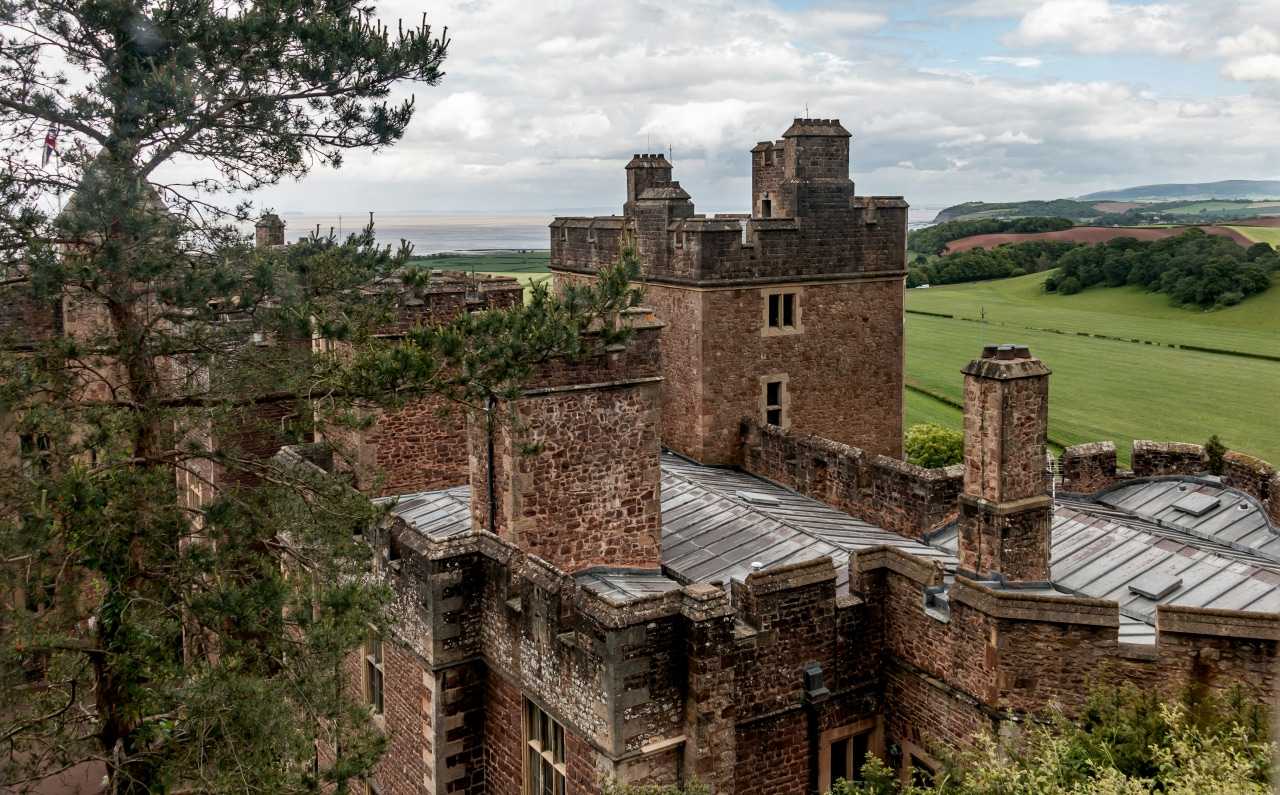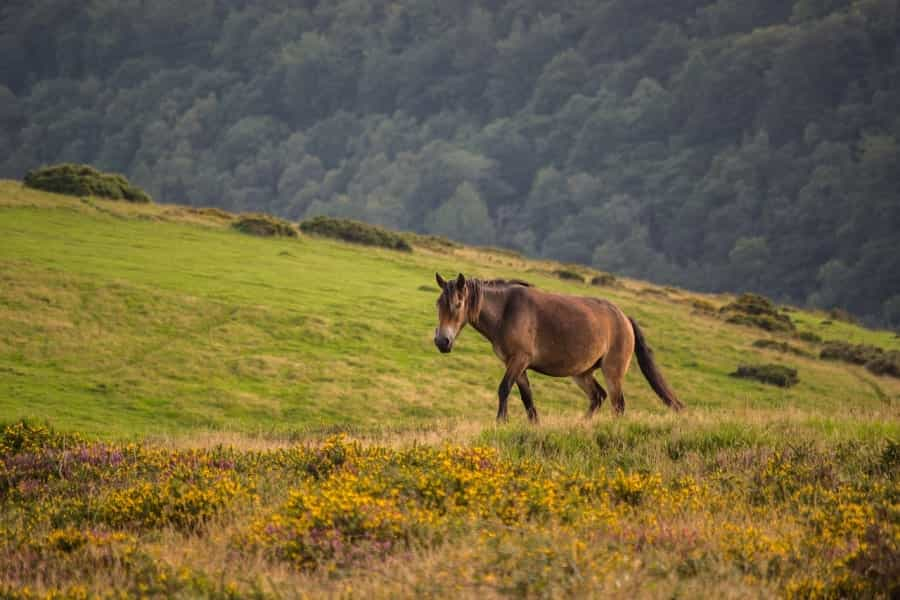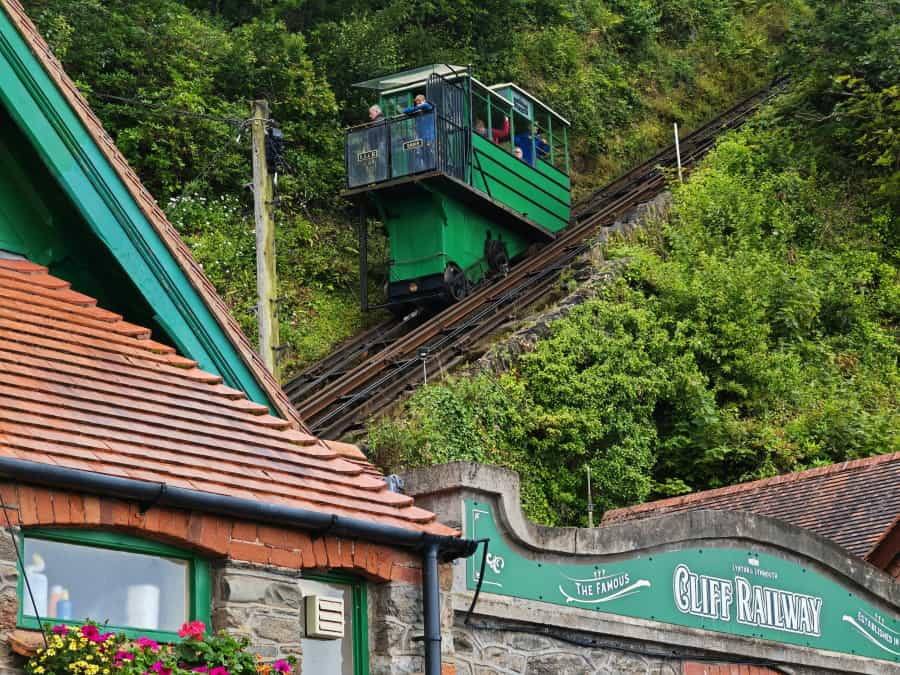Cultural Highlights of Exmoor

As well as being hugely attractive for hikers and holidaymakers, Exmoor’s wild uplands, dramatic coastline and tranquil valleys have inspired writers and artists from Samuel Taylor Coleridge to William Wordsworth and author R.D Blackmore. These days, the park is home to a community that's keen to keep Exmoor's local heritage alive. Our guide to Exmoor culture takes in historic landmarks and attractions, moorland traditions, festivals and events, as well as art galleries and museums that preserve and celebrate the essence of this beautiful national park.
Historic landmarks
Dunster Castle
A prominent Exmoor landmark set on a wooded hilltop with commanding views of the Bristol Channel and the Quantock Hills, Dunster Castle was owned by the Luttrell family from 1376 until being given to the National Trust 600 years later. There has been a castle on the site since medieval times, with just a handsome gatehouse and a ruined tower remaining today. Renovation works in the 19th century resulted in the building that you can visit today – a comfortable Victorian mansion surrounded by terraced gardens, with a working watermill in its grounds.
Inside, the great hall, dining room, drawing room and bedrooms are filled with period furnishings, artworks and historic artefacts. Look out for the rare 17th-century leather hangings, the carved Grand Staircase and an impressive library. The terraced gardens are filled with a collection of Mediterranean and subtropical plants, while the wooded garden beside the River Avill is home to magnolia trees and a natural play area. Regular demonstrations take place in the mill by the water, and you can pick up some of the flour made here to take home.
The castle is open every day from late March to the end of October, and then at weekends until the end of December. Entry for National Trust members is free, and dogs (on leads) are welcome in the gardens. Please check the castle’s website for full details of entry times and prices.
Tarr Steps
Constructed from gritstone slabs and boulders, at 55 metres across this beautiful 17-span ‘clapper bridge’ over the River Barle is by far the longest in Britain. Tarr Steps is thought to be medieval, but probably formalises the site of a crossing dating back to prehistoric times. Although it has been damaged by floods several times over the years, the original stones have always been replaced.
Local folklore suggests that the Devil himself built the bridge and forbade anyone from crossing until a deal was struck with a local parson. Crossing was then allowed, unless the Devil chose to sunbathe there. We’d suggest you check before you cross.
While the bridge on its own is undoubtedly worth a visit, we'd also recommend the gentle two-mile circular walk along the river, which passes through the woods and meadows of the surrounding nature reserve. Keep your eyes peeled for red deer and otters. Children love to paddle here too, and if you’re fond of a wild swim, there are some good pools just a 20-minute walk upstream.
Selworthy Village
Part of the National Trust's Holnicote Estate, Selworthy is a quintessential Exmoor village, home to 19th-century thatched cottages and the 15th-century All Saints church. To get a real feel for this beautiful spot, follow the three-mile circular walk through the woods (carpeted with bluebells and wildflowers in spring), which passes the remains of the Iron-age Bury Castle hill fort and continues up to nearby Selworthy Beacon, which has sweeping views over the moor and across the sea to Wales.
Local traditions and heritage
Exmoor’s farm animals are beloved fixtures on the moor, and also make a valuable contribution to maintaining its fragile ecosystem. Here are a few of the breeds to look out for.
Exmoor Horn Sheep
A hardy native breed perfectly adapted to grazing on upland pastures, the Exmoor Horn Sheep has been raised on the moor for centuries. Prized for both its meat and its wool, the breed continues to make a significant contribution to the conservation of the park’s landscape. Find out more at the Exmoor Horn Sheep Breeder’s Society website.
Exmoor ponies

Managed herds of Exmoor’s famous ponies roam freely on the moor, and have been a cherished part of local life for hundreds of years. You’ll often spot them if you're hiking in Exmoor, and every August the Exmoor Pony Festival celebrates this beloved breed through guided pony-spotting walks, talks and local shows. If you’re visiting at other times, the Exmoor Pony Centre at Ashwick (April to November, Wed-Sun 12pm-4pm), run by the Moorland Mousie Trust, holds regular activity days where you can get up close, feed the ponies and even take a short ride (please book in advance).
Festivals and events
Dulverton Exmoor Literary Festival
Held every November, this compact but intriguing event welcomes authors, journalists and politicians to Dulverton’s town hall for a series of talks, interviews and workshops. As an idea of what to expect, the 2024 festival features Dragon’s Den regular Deborah Meaden, author and journalist Rachel Johnson, historian Jonathan Dimbleby and former Children’s Laureate Lauren Child. Tickets and further information can be found on the festival website.
The Two Moors Festival
Running every October since 2001, this creative chamber music festival welcomes renowned and up-and-coming classical musicians to churches, village halls and the odd unusual venue in towns across Exmoor for a series of intimate concerts. It offers a great chance to catch prominent musicians outside of Britain’s big cities and has become a popular institution that attracts audiences of more than 6,000 each year. Full details of this year’s venues, ticket prices and guests are available on the Two Moors Festival website.
Porlock Carnival
On the first Saturday of every September, the village of Porlock celebrates its vibrant annual carnival with a colourful parade led through the village by the Town Crier, featuring vintage cars, musicians, floats, stilt walkers and majorettes, with prizes for the best floats and costumes. All proceeds from the event go to local charities, and it’s a great way to see the community at play.
Exmoor Dark Skies Festival (October/November)
The Exmoor National Park Authority runs this annual event for budding astronomers, which takes in family-friendly stargazing sessions, events and activities all over the moor. Full details are available as the event approaches on the festival website.
Exmoor Food Fest
Every year for the whole of February, pubs, restaurants, tearooms and cafes across the moor join in with this annual celebration of Exmoor produce and tasty local cuisine, which features special menus from some of the region’s best chefs. Full details of all participating establishments can be found on the Exmoor Food Fest website.
Historic attractions, museums and art
Lynton and Lynmouth Cliff Railway
Running since 1890 (yes, 1890), the cliff railway between Lynton and Lynmouth is the world’s highest and steepest fully water-powered railway, and one of only three in existence across the globe. Each car has a tank that holds 700 gallons of water from the West Lyn River, and when the water is released from the lower car, it allows the weight of the (full) top car to pull it up the incline. The three-minute journey may be short, but you’ll be rewarded with fabulous views over the North Devon coast and the pleasure of having had a very rare experience.
Eco-friendly, sustainable and fun, the railway is open from February to November (operating continuously from 10am) and even after more than 100 years, is still the best way to get from the top of the cliffs down to the beach.

Local history museums
If you’d like to learn more about life on Exmoor, local history and agricultural heritage, there are several museums across the moor with eclectic displays of historic and domestic artefacts, photos and more.
- Dulverton Heritage Centre explores the history and culture of Dulverton and Exmoor and includes a photographic archive, a recreated Victorian kitchen and a popular model railway. Opening hours and other details can be found at the museum's website.
- The Lyn and Exmoor Museum This small museum, set in Lynton’s oldest house, features photos, engravings and paintings documenting local maritime, agricultural, domestic and natural history, a Victorian dolls’ house and models from the Lynton & Barnstaple Railway.
- Dovery Manor Museum Housed in a charming 15th-century manor house with a pretty garden, this museum explores the history of Porlock through domestic, school and trade items, and has displays on painters and poets inspired by the area.
- Allerford Museum A museum of country life housed in a thatched Victorian schoolroom, with an original classroom, domestic artefacts, children’s games, a historic archive and displays on traditional rural trades.
- Exmoor National Park Visitor Centres The park’s official visitor centres at Dulverton, Dunster and Lynmouth all have films, interactive exhibits and exhibitions on local history, wildlife and the moor’s fascinating landscapes.
Exmoor art galleries
If you’d like to pick up a souvenir of your visit to Exmoor, a number of local galleries showcase work by painters and photographers inspired by the region.
- Lanacre Barn Gallery near Withypool: paintings and photographs celebrating the beauty of Exmoor by artist Jo Minoprio.
- Melody Art in Porlock: paintings and photographs inspired by the moor, from local artists Melody and David Hawtin.
- Polly Skye Gallery in Lynton: paintings and prints by Devon-based artists.
- Churchgate Gallery in Porlock: paintings in a variety of media inspired by the Exmoor landscape.
- Leo Davey Studio & Gallery in Minehead: watercolours, oils and prints of the Exmoor landscape by artist Leo Davey.
Literary connections
R.D. Blackmore and Lorna Doone
Set against a background of the 17th-century Monmouth Rebellion, Lorna Doone – R.D Blackmore’s romantic 1869 tale of the love between farmer John Ridd and the titular heroine – immortalised the moors, valleys and rivers of Exmoor. On a walk through the Doone (Badgworth) Valley, it’s still possible to visit many of the sites that inspired the author today, while nearby Malmsmead is home to Oare House and Oare Church, both pivotal locations in the story. The National Trust’s circular,eight-mile walk along the valley takes in the deserted medieval village of Badgworthy and a memorial to the author.

Samuel Taylor Coleridge
Romantic poet and philosopher Samuel Taylor Coleridge was inspired by Exmoor and the landscape around Porlock, which he visited regularly from his home in Nether Stowey, in the nearby Quantock Hills. During the period when he lived there, he published some of his most famous works, including The Rime of the Ancient Mariner and the opium-inspired Khubla Khan, as well as the Lyrical Ballads, written in collaboration with his friend William Wordsworth.
The 51-mile Coleridge Way runs from Nether Stowey to Lynmouth, and while walking the whole route might be the province of the true enthusiast, we recommend the short section around Lynton’s Valley of Rocks (where Poet’s Corner has mosaic panels commemorating poems by Coleridge, Wordsworth and Percy Shelley) as a great way to get a flavour of the landscape that inspired him.
If you’re looking for somewhere to pitch your tent, check out Pitchup's collection of campsites on Exmoor.